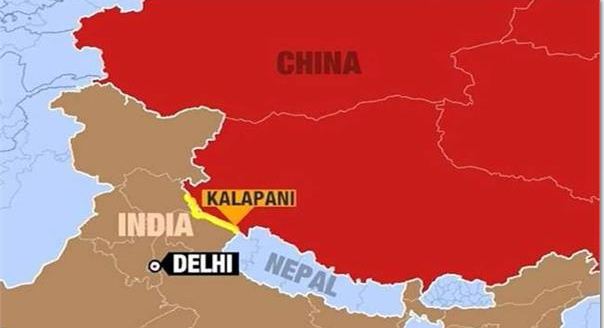Why in news?
- The India-Nepal border is unique as neither country has allowed a political boundary to interrupt the age-old traffic of people.
- This is now being threatened by territorial nationalism on the Nepali side and an emerging security state on the Indian side.
What is the recent controversy?
- Residual revolutionaries of the Left competed with the supposedly pro-India Nepali Congress.
- Demonstrations were held on the streets of Kathmandu condemning India for releasing redrawn maps.
- The Maps showed Kalapani at the India-Nepal-China tri-junction to the north and Susta to the south as Indian territory.
- There is a perception that the publication of the new map was a departure from the past.
- It is seen to have constituted harmful cartographic aggression.
Is this a valid concern?
- These latest maps have actually nothing to do with Nepal.
- They were published to reflect the recent bifurcation of the state of Jammu and Kashmir (J&K) into the two new Union Territories of J&K and Ladakh.
- There was no change in the depiction of India-Nepal boundary.
- However, notably, Nepal has, in the past, claimed territory in the Kalapani area and Susta as its own.

- The Kalapani controversy has arisen due to a difference of perception as to the real and primary source of the Mahakali river.
- The Treaty of Sugauli concluded in 1816 locates the river as the western boundary with India.
- But, different British maps showed the source tributary at different places.
- This is not unusual given the then state of cartographic science and less-refined surveying techniques.
- There are similar problems regarding the alignment of the McMahon Line on the eastern sector of the India-China border.
- With regard to Susta, the problem has arisen as a result of the shifting of the course of the river.
- This is again a frequent occurrence in rivers shared by neighbouring countries.
- The two sides agreed that these differences should be resolved though friendly negotiations.
- The foreign secretaries were mandated to undertake this exercise.
- But, these talks are yet to take place.
Why is the protest disputed?
- If this is an issue with the potential to arouse such strong public sentiment on the Nepali side, then the inaction over the foreign secretaries talks is questionable.
- The Nepali side is seemingly uninterested in following up the issue through serious negotiations.
- This is what happened with Nepali demands for the revision of the India-Nepal Friendship Treaty.
- The Indian side agreed in 2001 to hold talks at the foreign secretary level to come up with a revised treaty.
- Nepal expects this to be more “equal” with reciprocal obligations and entitlements.
- However, only one such round of talks has taken place.
What could be done?
- The two countries have managed to settle about 98% of the common border.
- More than 8,500 boundary pillars have been installed reflecting the agreed alignment.
- There are possibly two ways to deal with the current challenge:
- to accept a shifting border as the river itself shifts (or)
- to agree on a boundary which remains fixed despite changes in the course of the river
- The latter is usually the more rational choice.
- But, such matters require friendly consultations aimed at mutually acceptable outcomes.
Source: Indian Express
